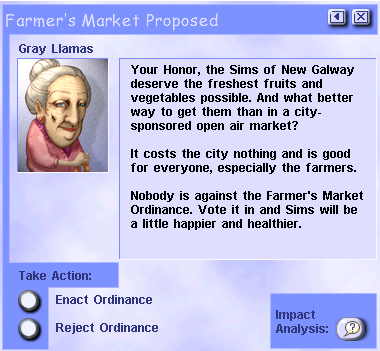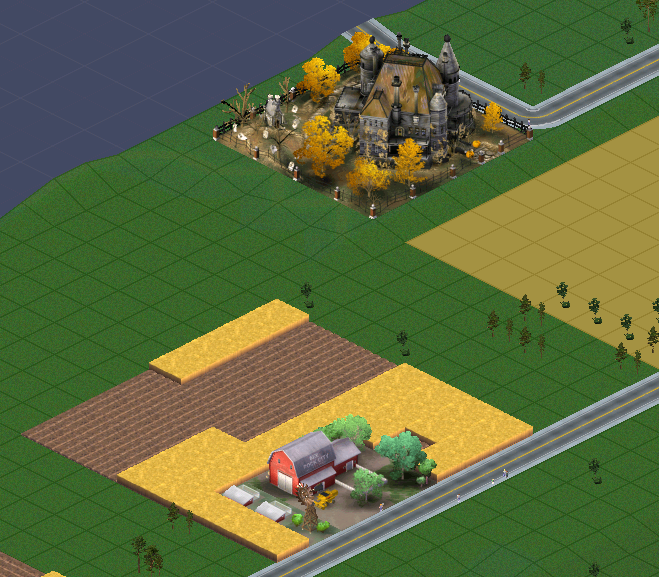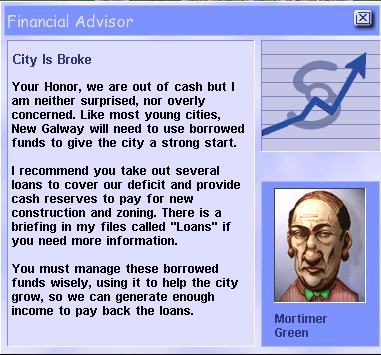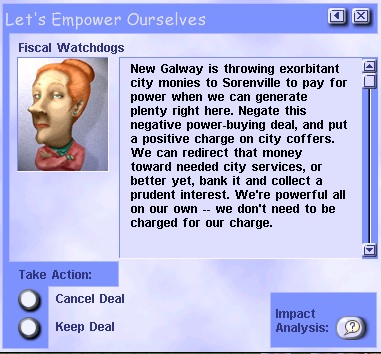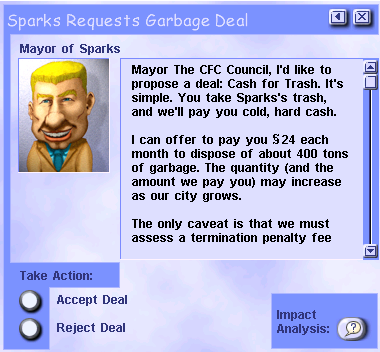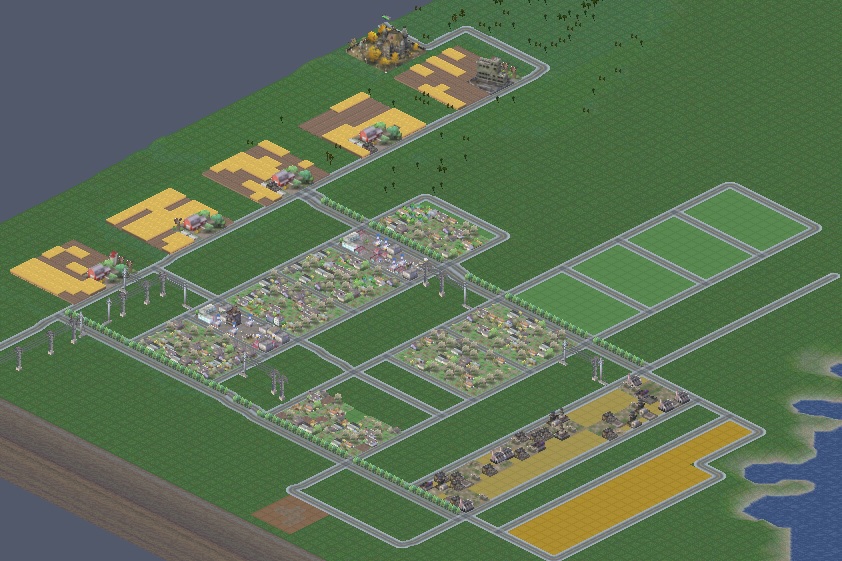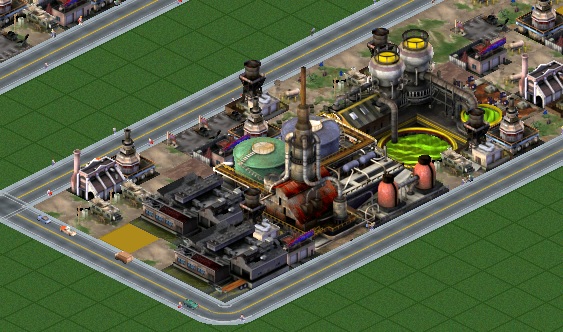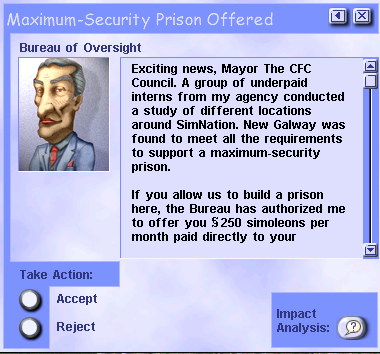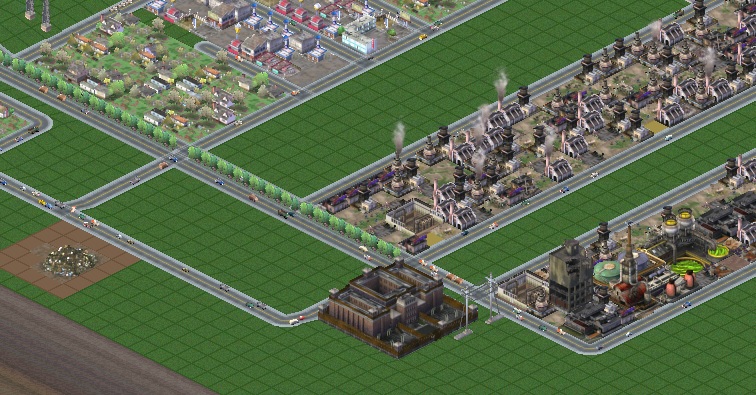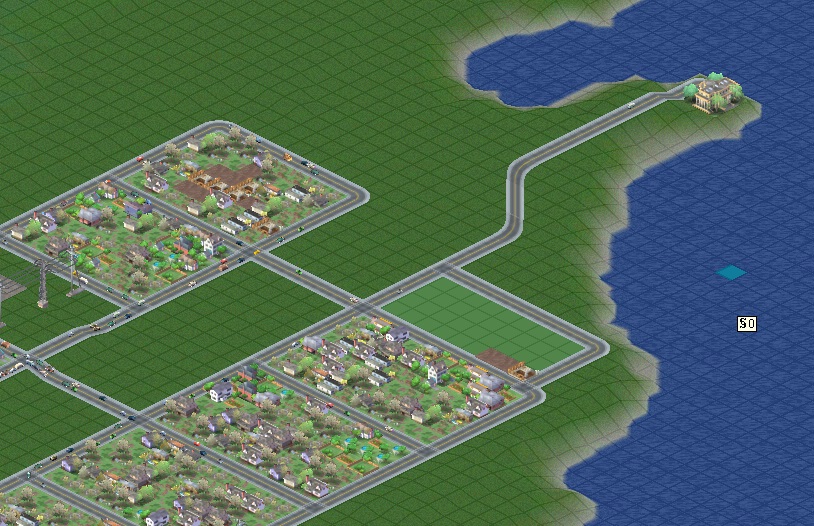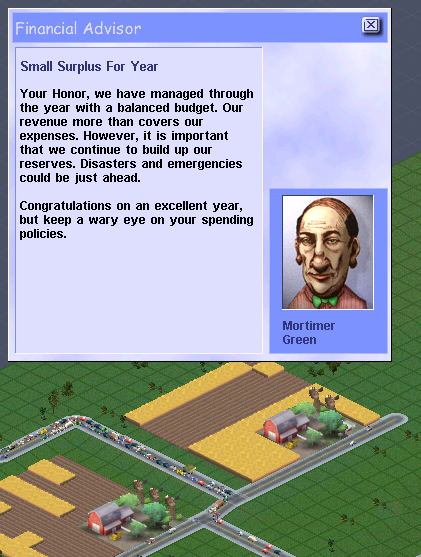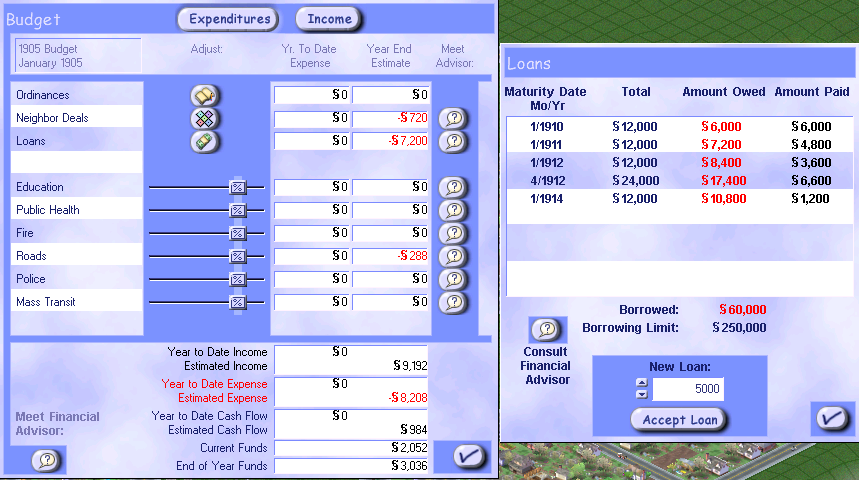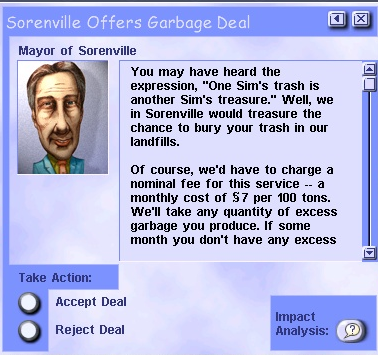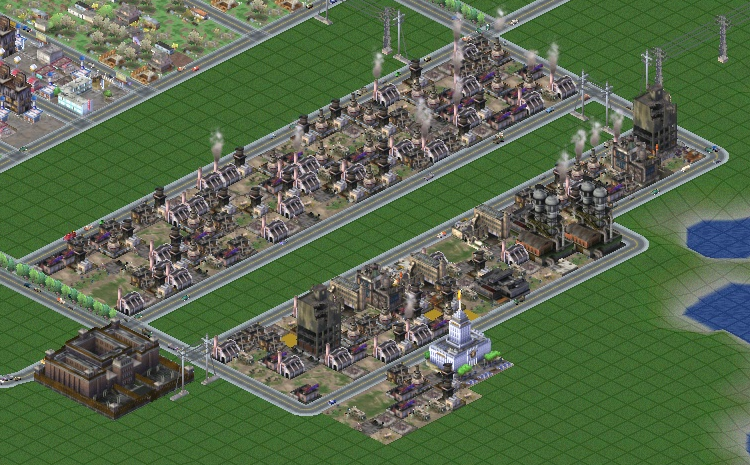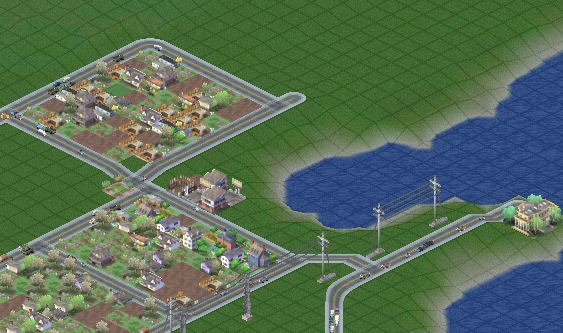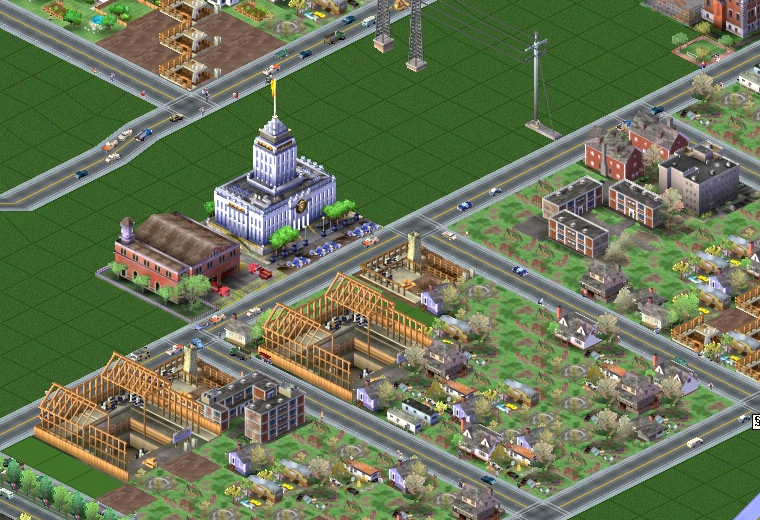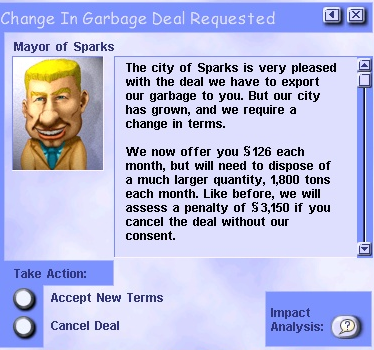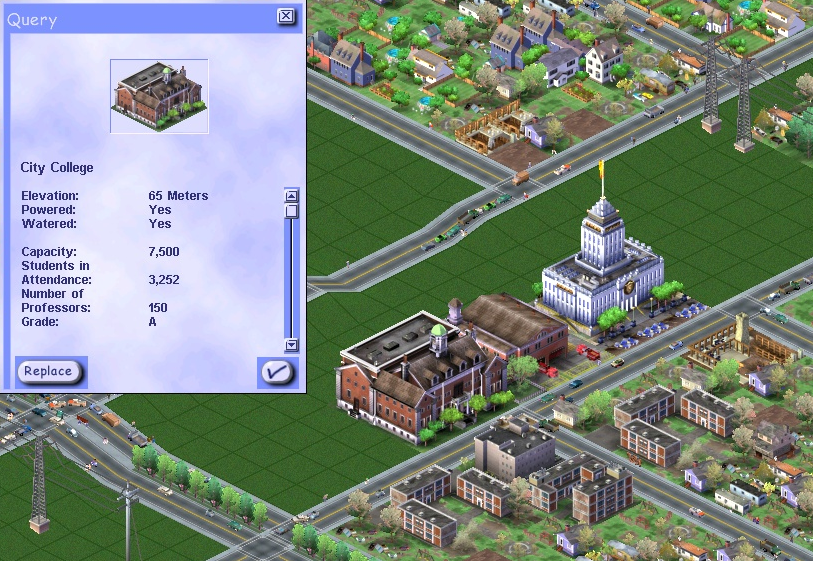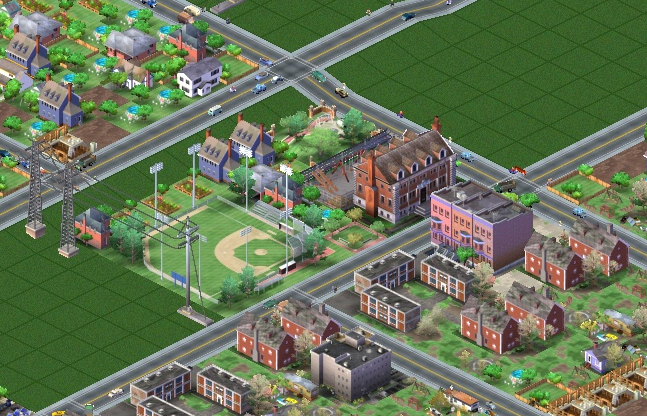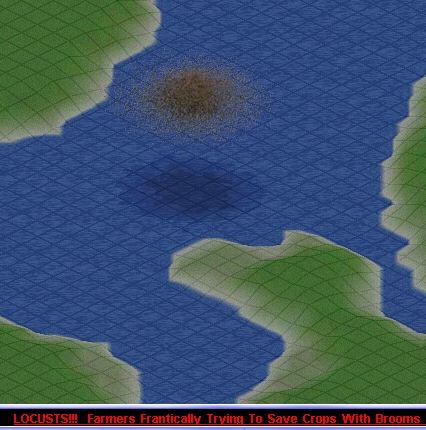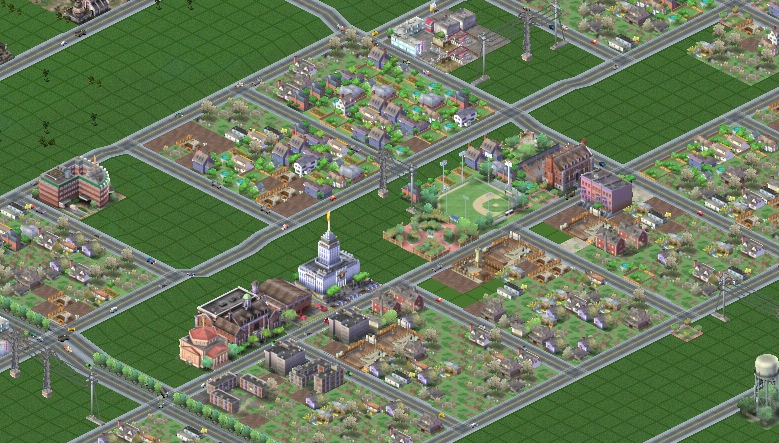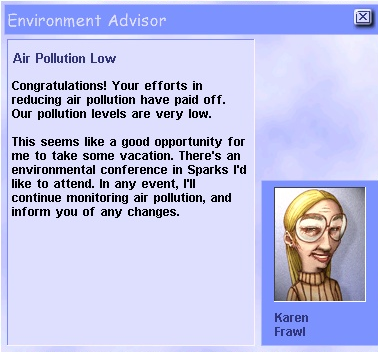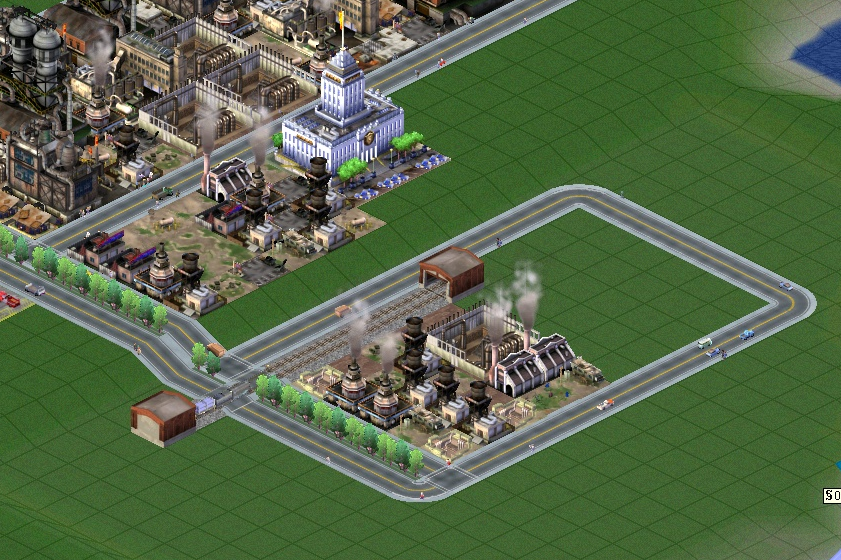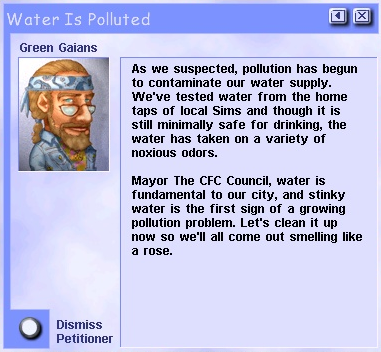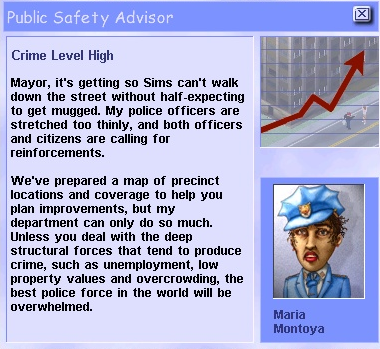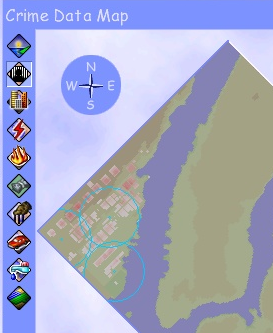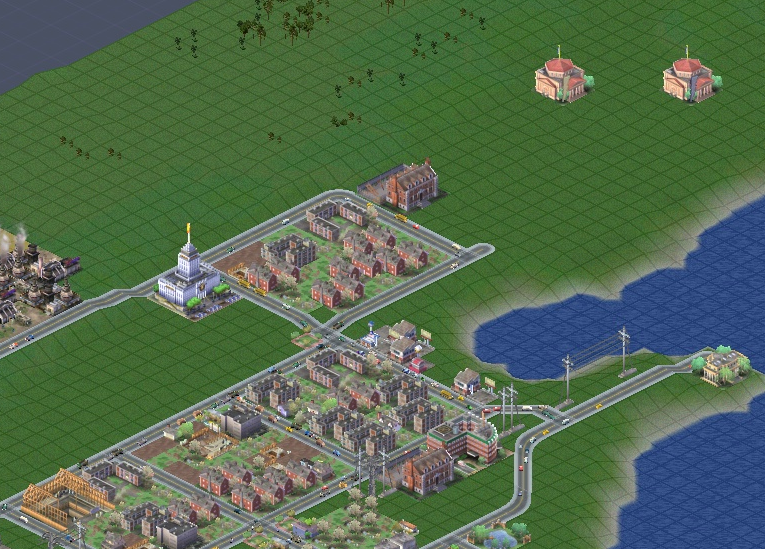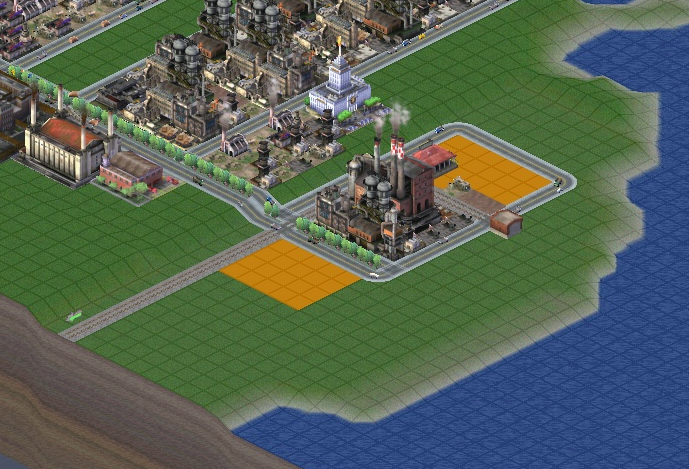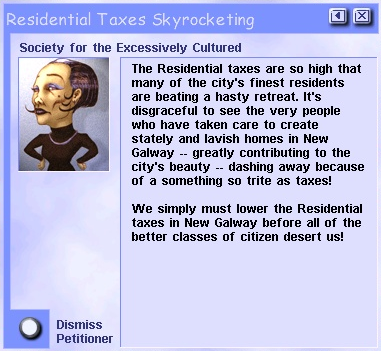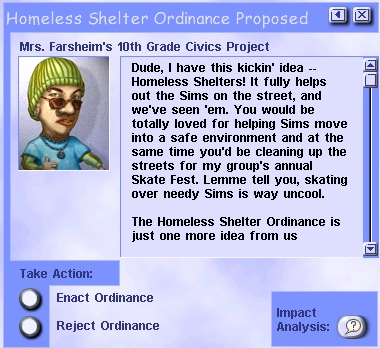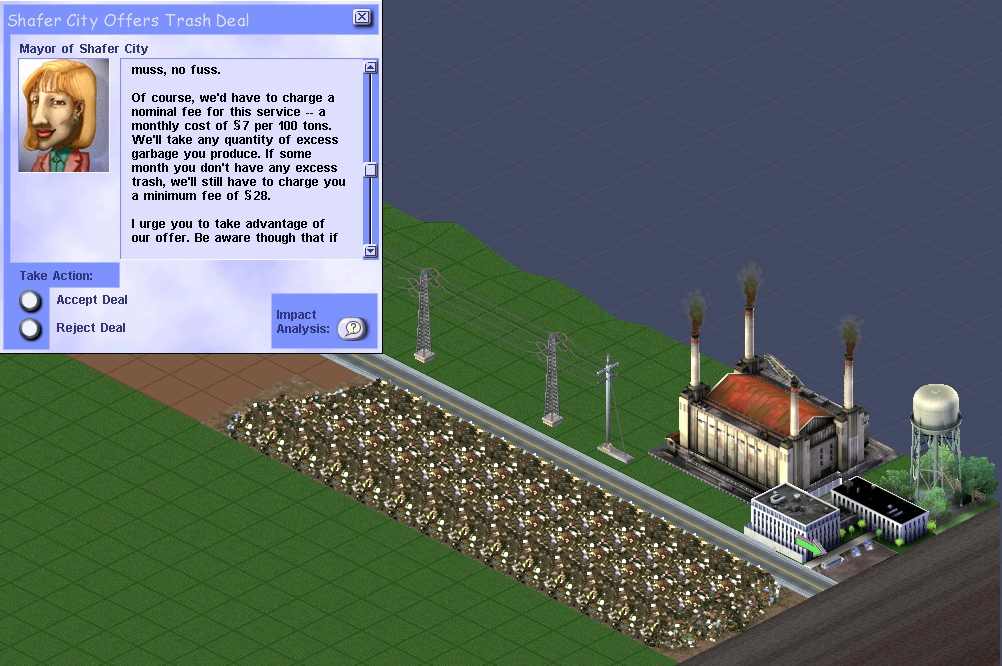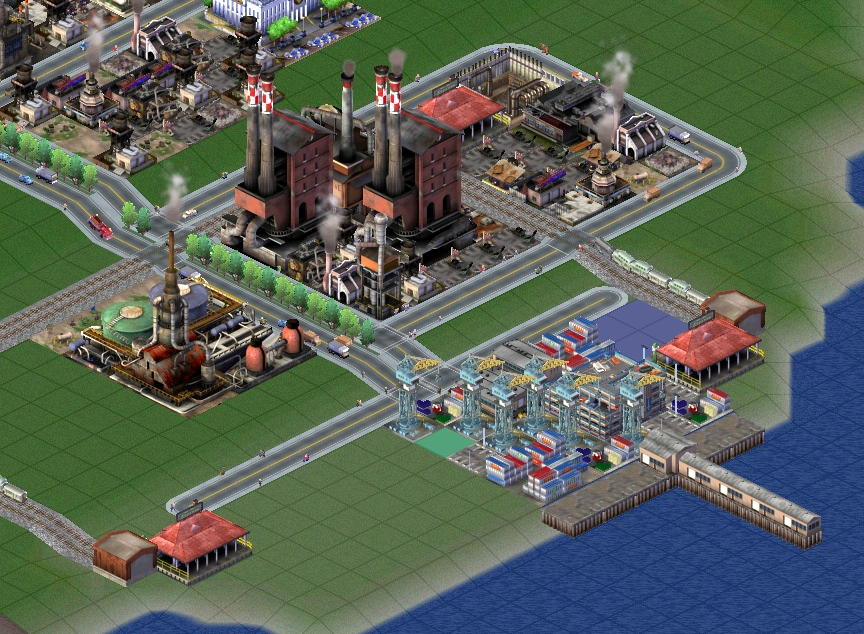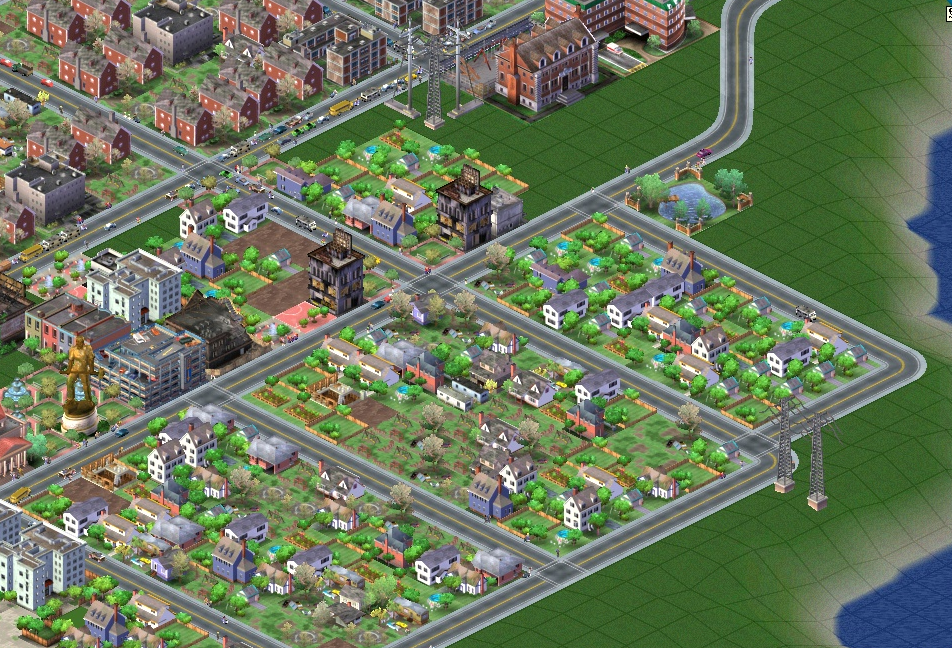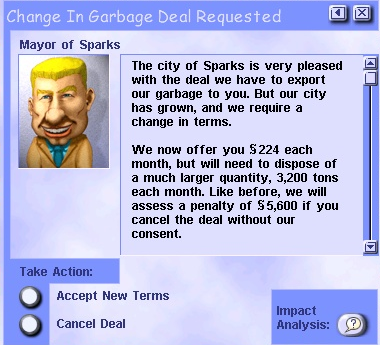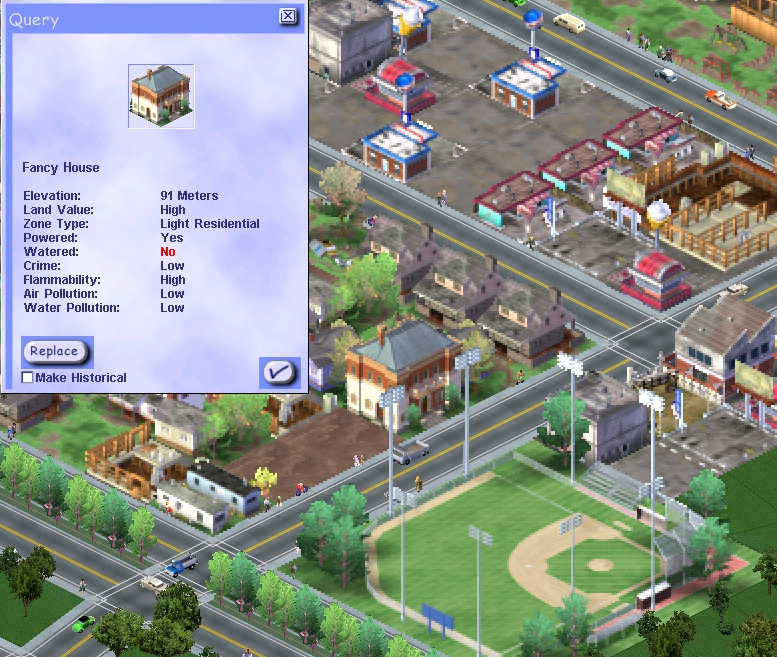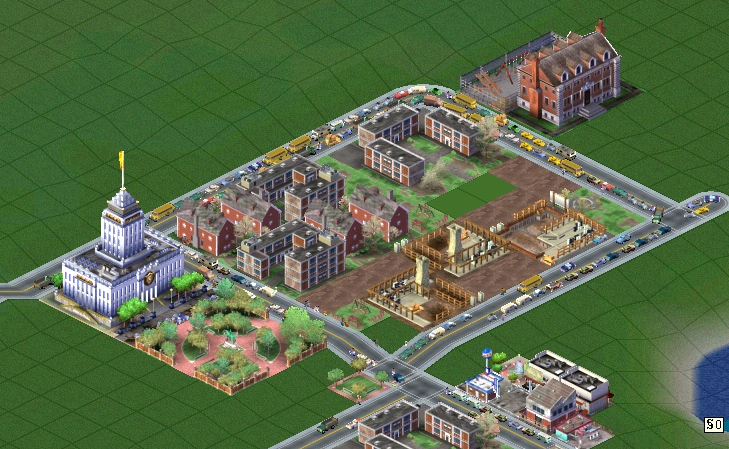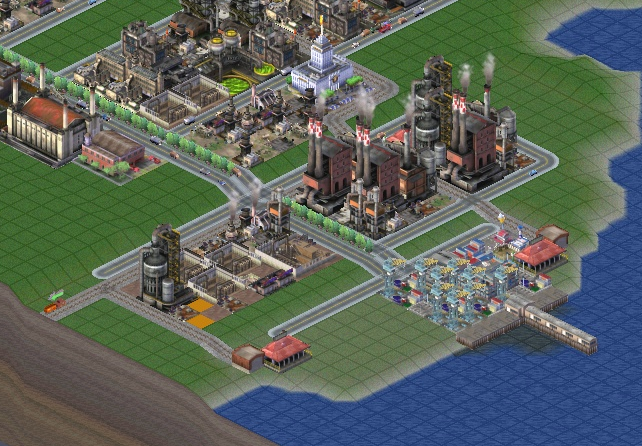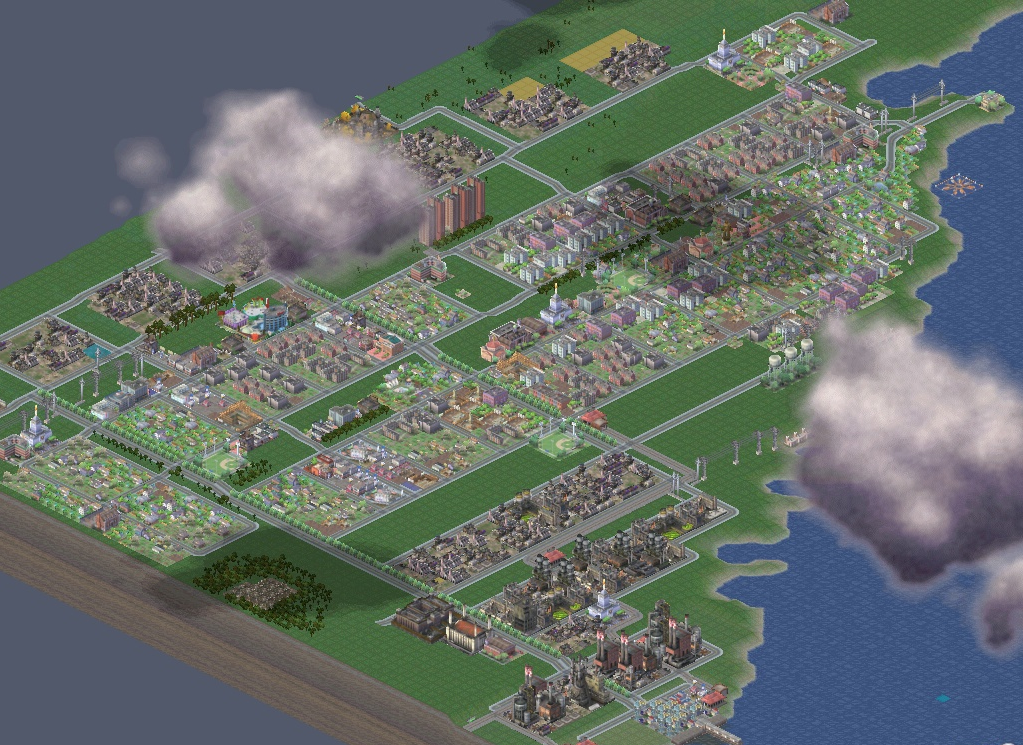Welcome to New Galway!
"A growing town with lots of debt, but lots of farms and lots of potential!"

With the recent release of Sim City 3000 Unlimited on Steam, I thought it would be fun to play it again, and was reminded of the Sim City 4 succession session that we had here at CivFanatics in 2013 - 2014. It proved to be a lot of fun to see the evolution of a city with multiple people running the show, and I thought, why not try it in Sim City 3000 as well?
And for the time being, you can grab Sim City 3000 Unlimited on Steam for $2 (regular price $5), or if you prefer, you can pick it up on GOG for $10. Either version, or, as far as I'm aware, a patched CD version, ought to work.
The SC4 succession session rules worked pretty well, so I'll keep them:
The way I figure this works is:
-One person controls the city for 5 years, and has absolute control for that period; nothing is sacred (although, don't be a jerk and go around razing everything your predecessor did)
-After their 5 years they save the city, compress it in Zip form and upload it here, along with a summary of what they've done. In what form and how long and detailed is at your discretion, but we're all pretty curious about what's being done.
-They then pass on the city to the next person who downloads it (to Steam/steamapps/common/Sim City 3000 Unlimited/cities) and opens it in game, and then can, again, do what they like
This carries on ad infinitum until we decide to start again on another city having left the first in total bankruptcy... or something
Rotation
In order to give people an opportunity to revisit the city later, I'll keep a limit of 6 people in the active rotation.
Active Rotation
Quintillus
*Your username here*
On hold
Having withdrawn from the active rotation due to insufficient time to play, these people have the first option to re-join
[no one]
On the Waitlist
Potential city council presidents, ready to step in should someone withdraw from the Active Rotation
[no one]
----
No mods are being used (one of the big advantages of playing SC3K), but if you experience the "too fast of scrolling" issue, you may want to apply the fix in this GOG post to get the game running perfectly.
The current version can be downloaded from this post (1905). Please note that the most recent reply should be checked for newer versions.
The Story So Far
The first five years has been played; look for a writeup soon!
"A growing town with lots of debt, but lots of farms and lots of potential!"
With the recent release of Sim City 3000 Unlimited on Steam, I thought it would be fun to play it again, and was reminded of the Sim City 4 succession session that we had here at CivFanatics in 2013 - 2014. It proved to be a lot of fun to see the evolution of a city with multiple people running the show, and I thought, why not try it in Sim City 3000 as well?
And for the time being, you can grab Sim City 3000 Unlimited on Steam for $2 (regular price $5), or if you prefer, you can pick it up on GOG for $10. Either version, or, as far as I'm aware, a patched CD version, ought to work.
The SC4 succession session rules worked pretty well, so I'll keep them:
The way I figure this works is:
-One person controls the city for 5 years, and has absolute control for that period; nothing is sacred (although, don't be a jerk and go around razing everything your predecessor did)
-After their 5 years they save the city, compress it in Zip form and upload it here, along with a summary of what they've done. In what form and how long and detailed is at your discretion, but we're all pretty curious about what's being done.
-They then pass on the city to the next person who downloads it (to Steam/steamapps/common/Sim City 3000 Unlimited/cities) and opens it in game, and then can, again, do what they like
This carries on ad infinitum until we decide to start again on another city having left the first in total bankruptcy... or something
Rotation
In order to give people an opportunity to revisit the city later, I'll keep a limit of 6 people in the active rotation.
Active Rotation
Quintillus
*Your username here*

On hold
Having withdrawn from the active rotation due to insufficient time to play, these people have the first option to re-join
[no one]
On the Waitlist
Potential city council presidents, ready to step in should someone withdraw from the Active Rotation
[no one]
----
No mods are being used (one of the big advantages of playing SC3K), but if you experience the "too fast of scrolling" issue, you may want to apply the fix in this GOG post to get the game running perfectly.
The current version can be downloaded from this post (1905). Please note that the most recent reply should be checked for newer versions.
The Story So Far
The first five years has been played; look for a writeup soon!

 . But the neighborhood is developing.
. But the neighborhood is developing.
